Weekly Recap
Last week was a quiet week as far as U.S. and global economic data was concerned. With little in the way of high-impacting US data, expectations for Federal Reserve rate cuts were broadly unchanged. Investors switched their focus to the uncertainty surrounding the US elections, knocking risk sentiment and pulling US stocks lower, ending a 6-week winning run. Meanwhile, safe-haven gold reached a fresh record high, boosted by safe-haven flows amid uncertainty surrounding the US election and geopolitical tensions in the Middle East.
Week Ahead
US earnings
This week is a big week for US corporate earnings, with 169 of the S&P 500 firms reporting. This will include big names such as Apple, Amazon, Alphabet, Meta, and Microsoft. These mega-cap stocks together make up 23% of the S&P 500 weighting. With this in mind, impressive earnings or disappointing numbers can impact the broader market sentiment. With the S&P 500 trading close to its record highs and some share prices such as Meta trading up 60% so far this year, the bar is high to see fundamentals supporting lofty evaluations.
Markets to watch: S&P 500, Dow Jones, Nasdaq 100

UK Budget (Wednesday)
The Labour chancellor, Rachel Reeves, will unveil her budget on Wednesday and is expected to announce extensive fiscal measures to plug a £22 billion black hole in public finances that she inherited from the Conservative government. Reeves said she’s looking for £40 billion to increase spending in some areas, which will be achieved through a series of tax increases, spending cuts, and a new golden rule that says that day-to-day spending must be balanced by tax revenue. The key here will be not to unnerve the market, and Reeves will be keen not to provoke a reaction like that seen when Liz Truss unveiled her budget 2 years ago, which sent GBP/USD to a record low. Higher taxes tend to have a deflationary impact, which could allow the Bank of England to cut interest rates faster, pulling the pound lower. Even if there are some growth-boosting policies, they’re more likely to be longer-term measures.
Markets to watch: GBP/USD, GBP crosses, FTSE 100
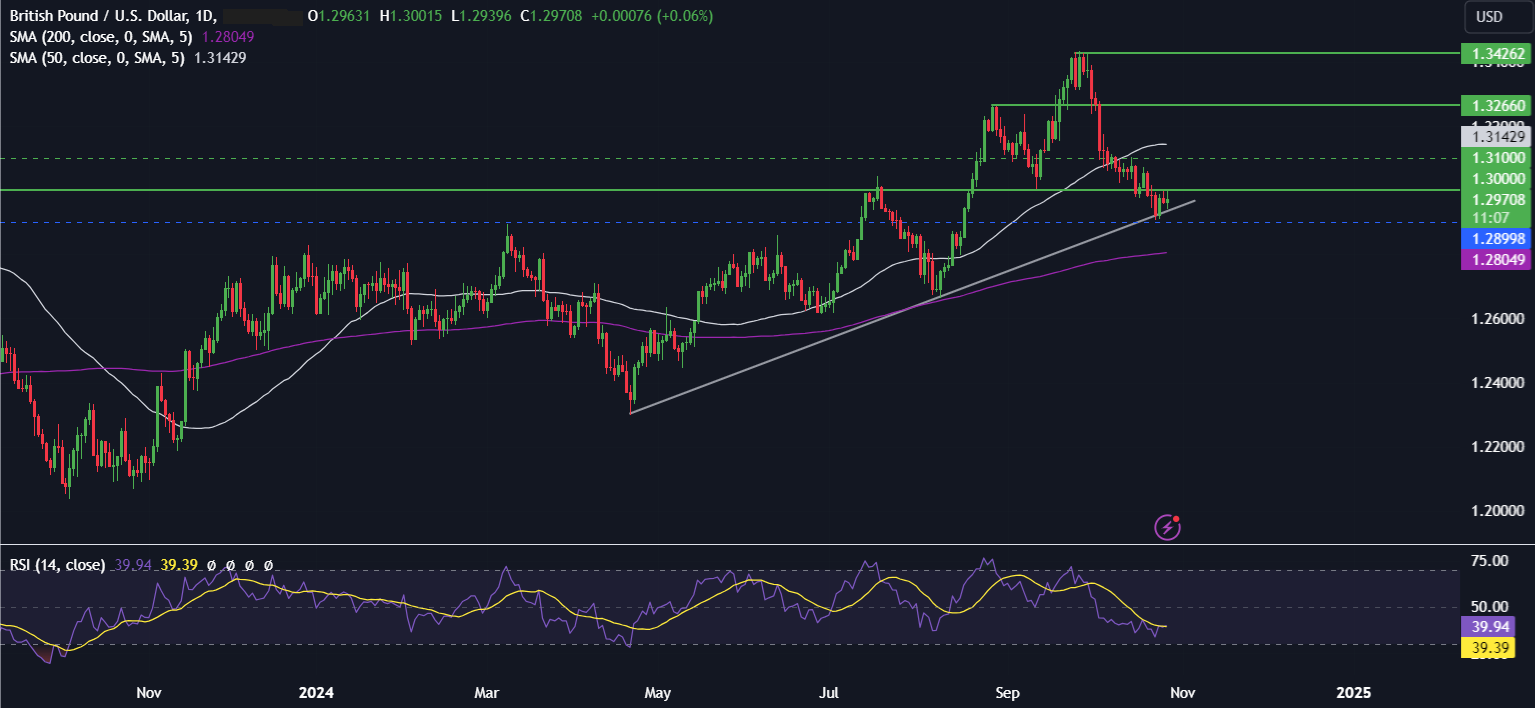
Australian CPI (Thursday)
September CPI provides the final piece of the Q3 inflation reading and is expected to show cooling to 2.9%, down from 3.8% YoY and 0.1% QoQ, down from 1% previously. This drop in inflation is being driven by a significant fall in energy prices across the period. However, the RBA has already indicated that it will be looking through this reading due to expectations of several 1-offs. RBA governor Michelle Bullock recently noted that while there’s been significant progress on inflation, it is going to take another year or two before it returns to target. In the September meeting, the RBA left rates unchanged but adopted a hawkish stance, expecting policy to remain restrictive until next year. Cooler than forecast inflation could raise rare-cut bets and pull AUD lower.
Markets to watch: AUD/USD, AUD crosses, SPI 100
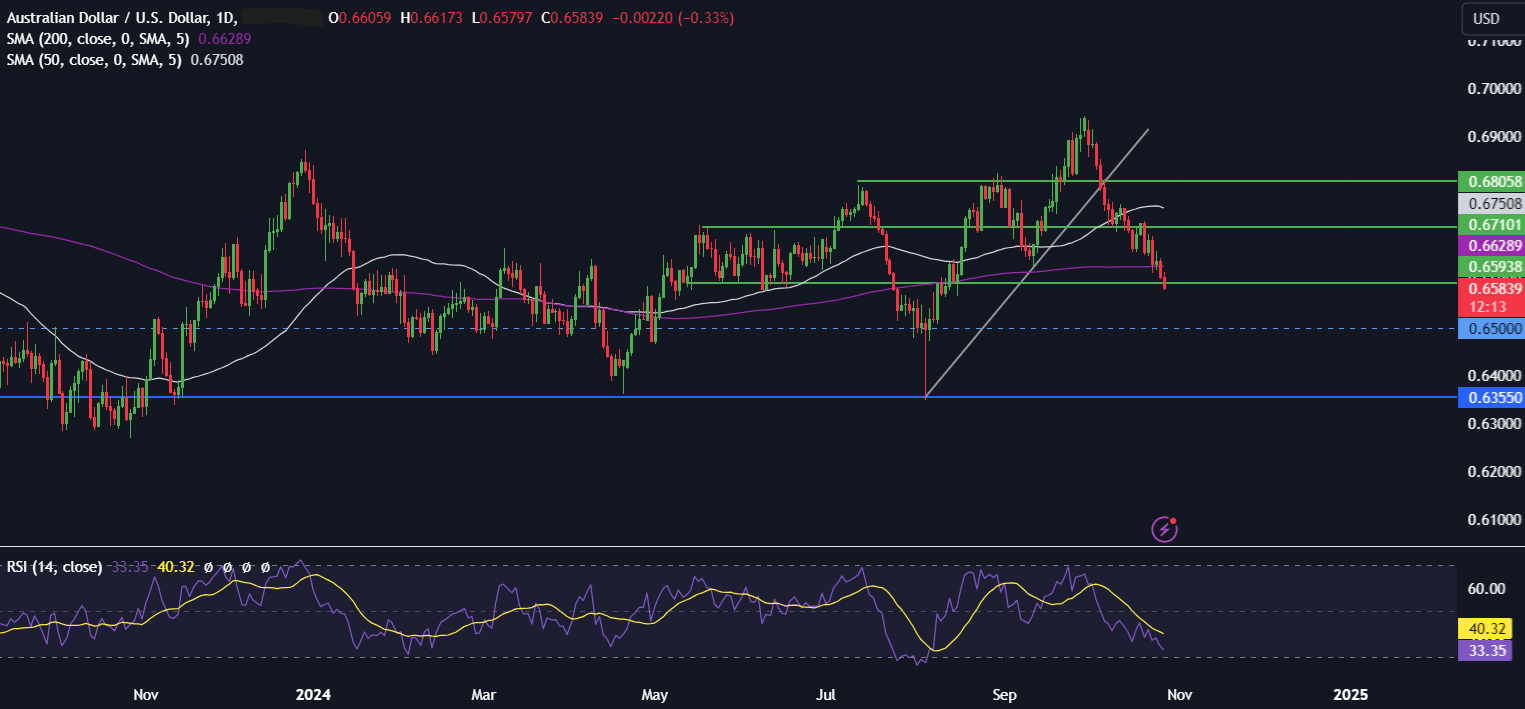
Eurozone CPI (Thursday)
Economists expect eurozone headline inflation to rise to 1.9% YoY in September from 1.7% in August. Core inflation is expected to hold steady at 2.7%. The data comes after inflation in September slipped below the ECB’s 2% target level for the first time since June 2021, owing to falling energy inflation. Despite the expected rise, the outlook remains encouraging, with inflation expected to stay below the 2% target on a sustainable basis from early next year, paving the way for the ECB to continue cutting rates and focusing on growth instead of inflation. The market expects the EB to cut rates in December and is pricing in around a 40% probability that the ECB could cut rates by 50 rather than 25 basis points. Weaker than forecast, Eurozone inflation could pull EUR/USD lower.
Markets to watch: EUR/USD, EUR crosses, DAX, Euro Stoxx 50

BoJ rate decision (Thursday)
The Bank of Japan will likely keep its interest rate unchanged at this week’s meeting, with the money markets pricing in an 82% probability for the rate to be left at 0.25%. Meanwhile, the central bank will also release its latest outlook report with board members’ median forecast for GDP and core inflation. The BoJ left rates unchanged at the previous meeting in September and provided little in the way of clues for future policy stance. Recent data showed inflation cooling and PMIs in contraction, which doesn’t support a hike from the central bank at this point. While the Bank of Japan could continue to hike interest rates, there is certainly no rush to do so.
USD/JPY trades at a 3-month high. A less hawkish-sounding BoJ could weaken the yen lower.
Markets to watch: USD/JPY, JPY crosses, Nikkei 225
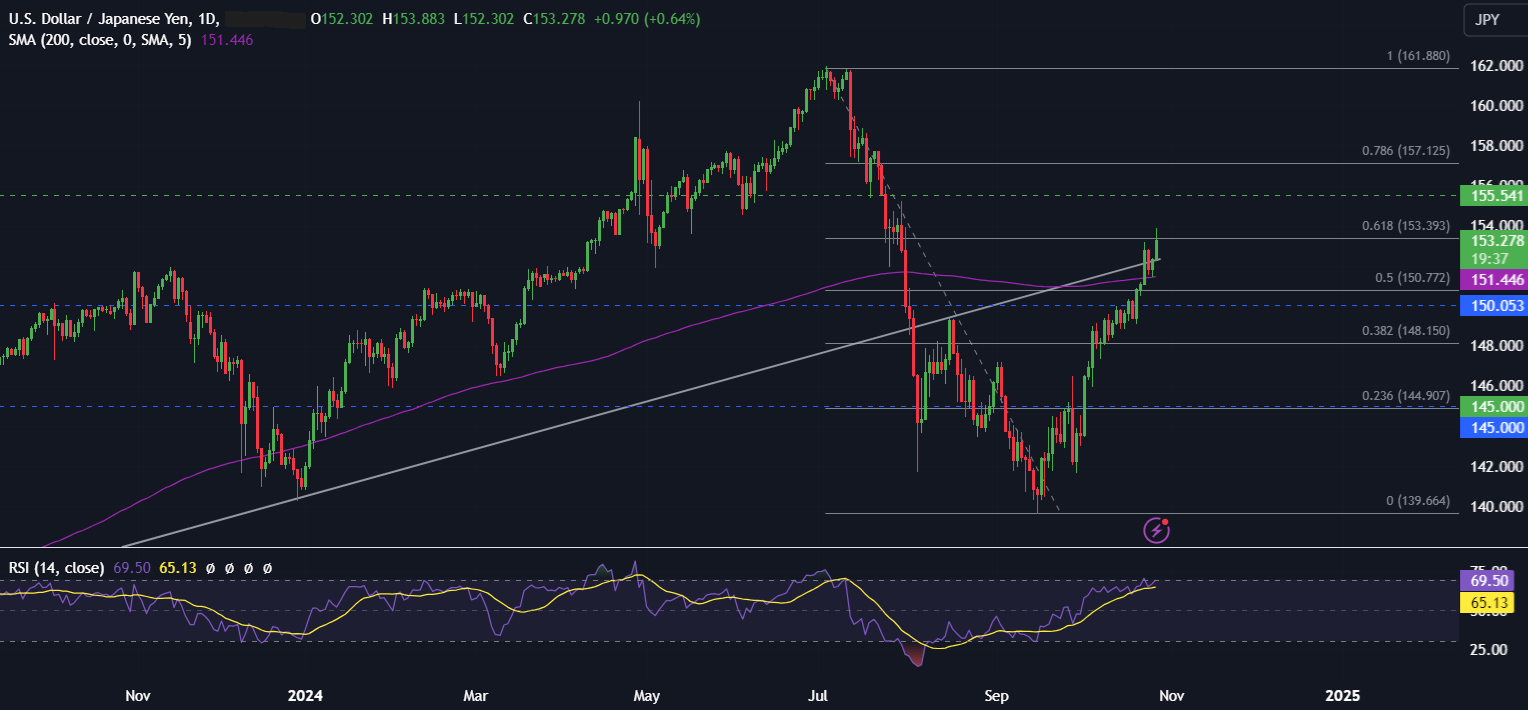
US core PCE & non-farm payroll (Thursday & Friday)
The Federal Reserve’s preferred gauge for inflation is expected to rise 0.2% MoM in September after rising 0.1% in August; meanwhile, an annual basis core PCE is expected to come in at 2. 6%, down from 2.7% previously. The data may not be particularly helpful for the Fed or investors, leaving the main focus on U.S. jobs data. Still, personal income and consumption figures are also due the same day and could offer additional clues about the health of the consumer.
US nonfarm payroll will be the week’s highlight on Friday. The NFP is expected to show that 140,000 jobs were created in October, a marked slowdown from the 254K increase in September. The unemployment rate is expected to hold steady at 4.1%, and average early hourly earnings are expected to be slightly down to 0.3% MoM, down from 0.4%.
Any sense that the US labor market is cooling could see the market increase expectations of back-to-back rate cuts from the Federal Reserve over the next meetings. However, if the labour market remains resilient and core PCE inflation shows signs of stickiness, then rate-cut bats could suffer a blow, boosting the USD and potentially bringing stocks and Gold lower.
Markets to watch: Gold, USD/JPY, USD crosses, S&P500, Nasdaq 100, Dow Jones
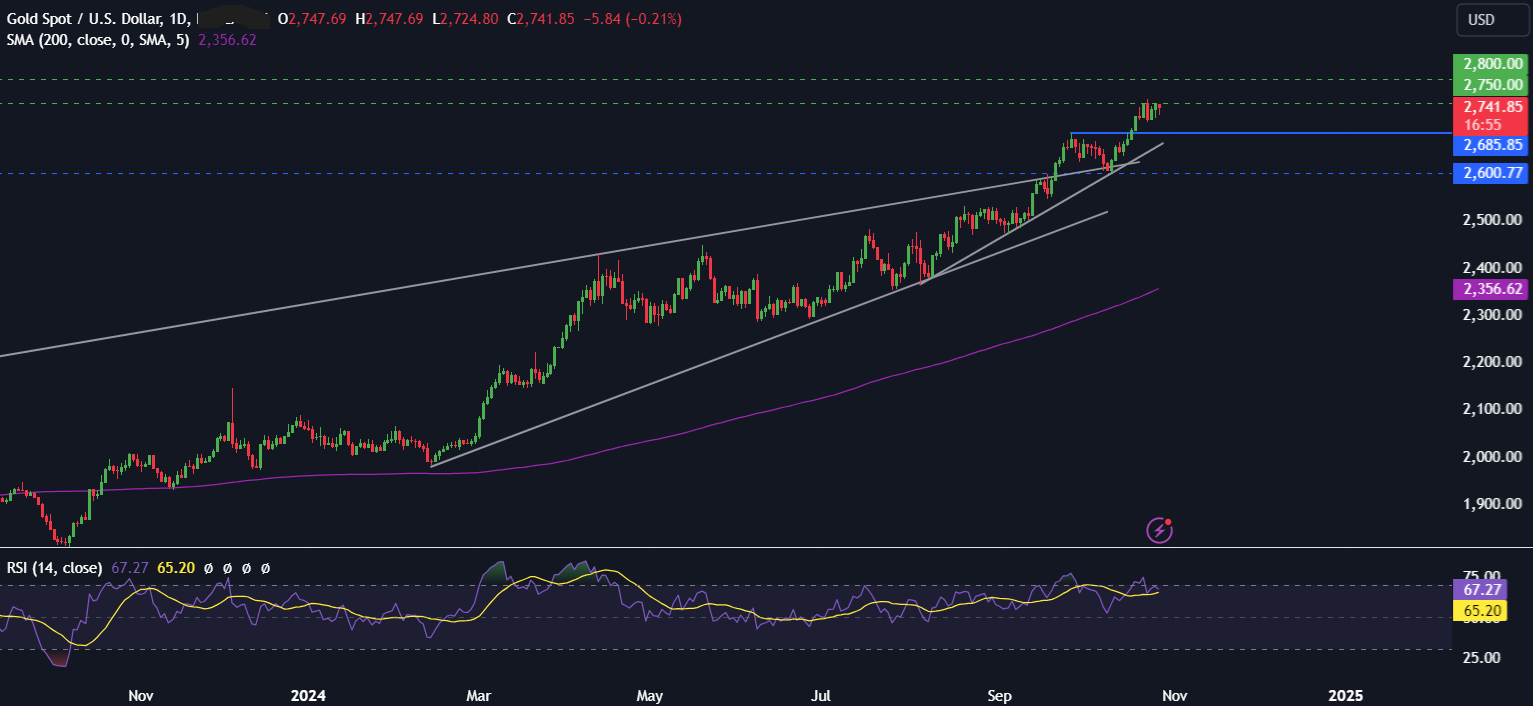
China PMI (Thursday)
October PMIs are expected to show that manufacturing moved back into the expansionary territory to 50.1, up from 49.8. The data comes on the back of Chinese stimulus measures that have been announced in recent weeks. While the stimulus will help lift growth, it’s unlikely to be sufficient to help growth back to the 5% target, particularly as the measures don’t do much to drive near-term consumer demand. This week’s data comes after the IMF cut their growth forecast for China to 4.8%, down from 5%.
Concerns over the growth outlook in China, the world’s largest oil importer, could add pressure to oil prices, which fell sharply at the start of the week. Oil prices fell 5% at the start of the week due to optimism of de-escalation in the Middle East, resulting in the risk premium on oil fading.
Markets to watch: Oil, USD/CNH, AUD/USD, Hang Seng
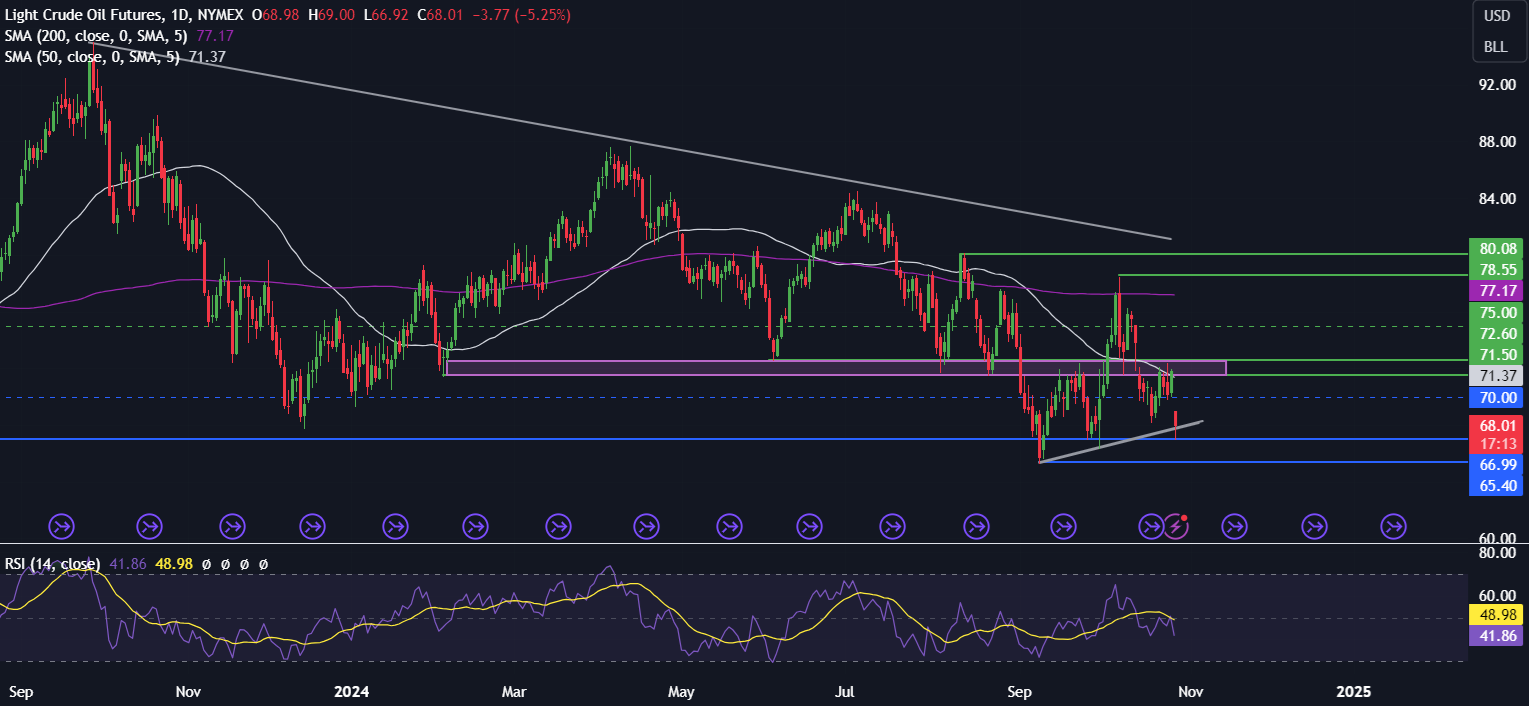
US elections
This week is the final countdown towards the November 5th election. While the polls are still too close to call, the odds market points to a win by former President Donald Trump. Uncertainty surrounding the elections could risk assets in check across the week, even in the case of good news from earnings and economic data.
The content provided here is for informational purposes only. It is not intended as personal investment advice and does not constitute a solicitation or invitation to engage in any financial transactions, investments, or related activities. Past performance is not a reliable indicator of future results.
The financial products offered by the Company are complex and come with a high risk of losing money rapidly due to leverage. These products may not be suitable for all investors. Before engaging, you should consider whether you understand how these leveraged products work and whether you can afford the high risk of losing your money.
The Company does not accept clients from the Restricted Jurisdictions as indicated in our website/ T&C. Some services or products may not be available in your jurisdiction.
The applicable legal entity and its respective products and services depend on the client’s country of residence and the entity with which the client has established a contractual relationship during registration.




